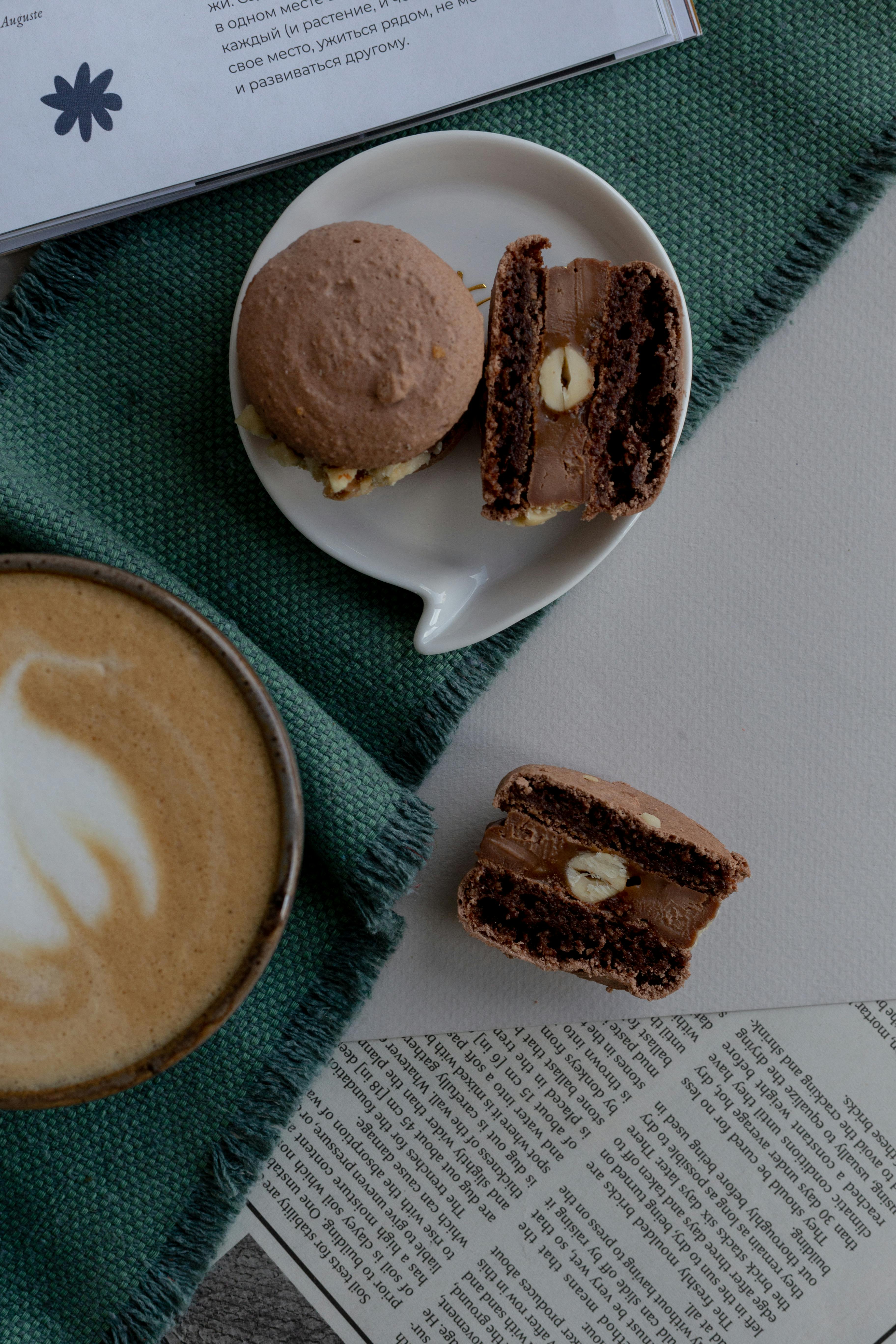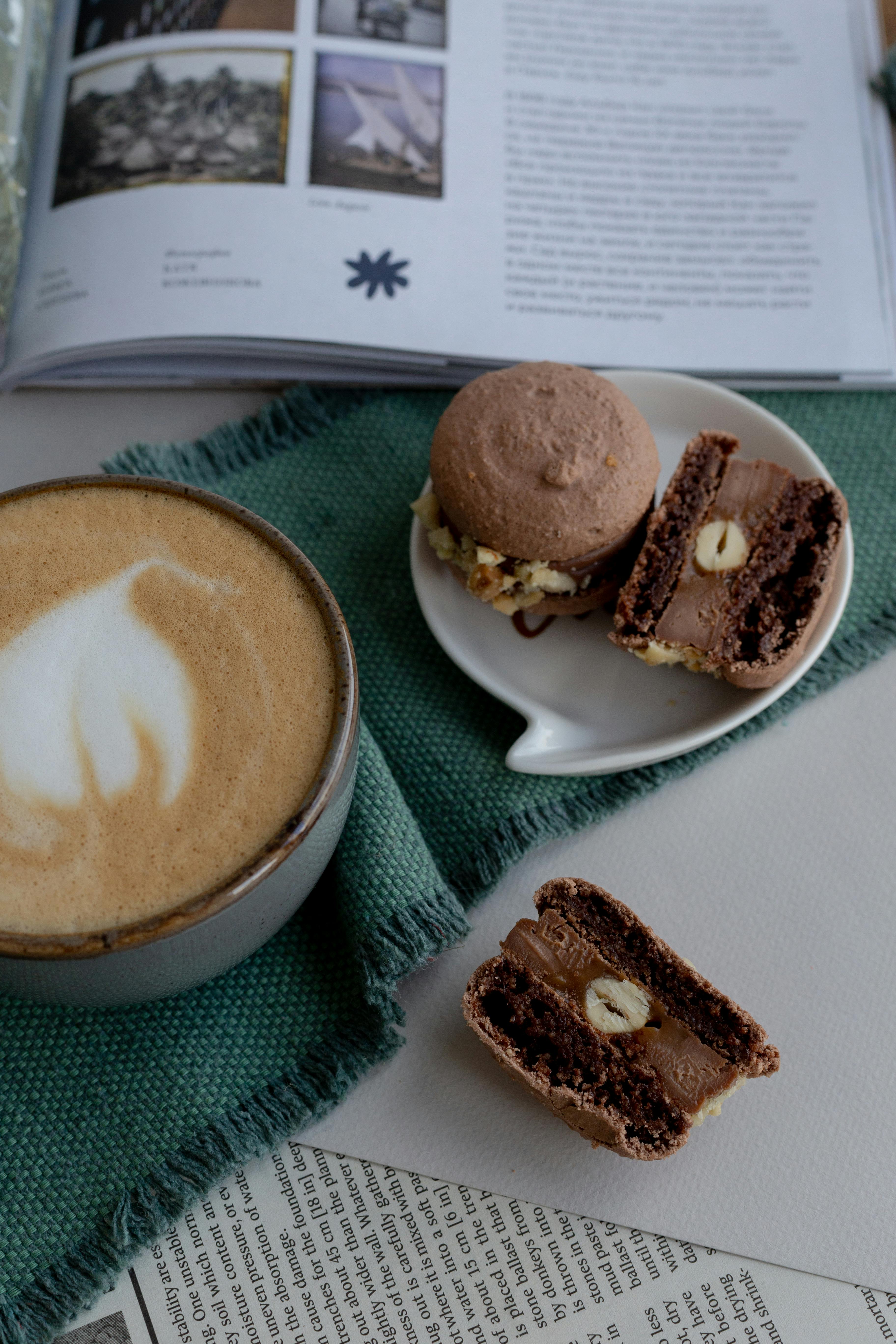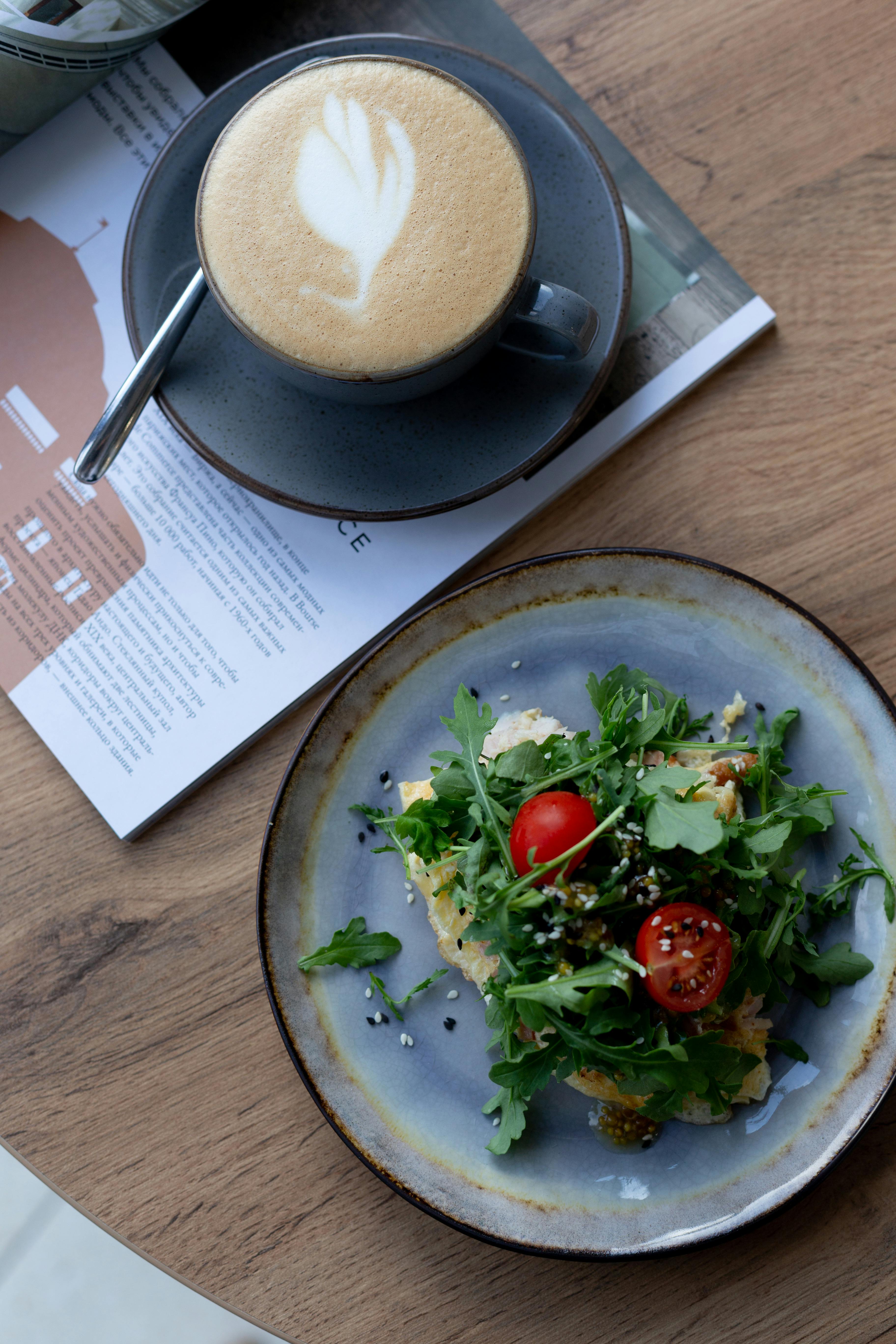Coffee and chocolate have long been beloved indulgences for many people around the world. But have you ever wondered if there is a deeper connection between these two delights? In this article, we explore the intriguing question of whether coffee and chocolate are related. Brace yourself for a captivating journey as we uncover the fascinating history and shared characteristics that make these two treats so wonderfully interconnected. Get ready to discover a whole new dimension to your daily dose of caffeine and cocoa!

Introduction
Welcome to our comprehensive article on the relationship between coffee and chocolate! As lovers of both of these delightful indulgences, we are excited to delve into their interconnectedness. Coffee and chocolate are more than just flavors that go well together; they share a rich history, similar chemical compositions, and are often produced in overlapping industries. In this article, we will explore the origins and cultivation of coffee and chocolate, their flavor profiles, production processes, health benefits, and the caffeine content they possess. So grab a cup of your favorite coffee and a piece of chocolate, and let’s dive in!
Background of Coffee
Origins of coffee
Coffee, a beloved beverage enjoyed by millions across the globe, has a long and fascinating history. Its origins can be traced back to ancient Ethiopia, where legend has it that a goat herder named Kaldi discovered the energizing effects of coffee beans. The story goes that Kaldi noticed his goats became lively and energetic after consuming red berries from a certain tree. Intrigued, he tried the berries himself and discovered their invigorating properties. Thus began the journey of coffee.
Cultivation of coffee
Today, coffee is grown in various regions around the world. The coffee plant, scientifically known as Coffea, flourishes primarily in tropical climates. It requires specific conditions, including the right altitude, rainfall, and soil composition, to thrive. Coffee beans are typically extracted from the plant’s cherries, which are harvested when fully ripe. They then undergo a series of processes, including drying, hulling, roasting, and grinding, before they are ready to be brewed into our beloved cup of coffee.
Types of coffee beans
There are several varieties of coffee beans, each with its own unique flavor and characteristics. The two most commonly cultivated species are Arabica and Robusta. Arabica beans are known for their delicate flavors, nuanced acidity, and pleasant aroma. They are often considered the higher quality option and are used in specialty coffees. On the other hand, Robusta beans are heartier and contain higher caffeine content. They have a stronger, more bitter taste and are often used in blends or for the production of instant coffee.

Background of Chocolate
Origins of chocolate
Like coffee, chocolate has a long and rich history. Its origins can be traced back to ancient Mesoamerica, where the ancient Mayans and Aztecs revered cacao beans. They believed that these beans had divine properties. Chocolate was originally consumed as a bitter beverage, often mixed with spices or honey. The Aztecs even used cacao beans as a form of currency.
Cultivation of cacao beans
Cacao trees, scientifically known as Theobroma cacao, are native to the tropical regions of Central and South America. The trees require a warm and humid climate, along with well-drained soil, to grow successfully. Cacao beans are found inside the tree’s large pods, which are harvested when ripe. The beans are extracted, fermented to develop flavor, dried, and then roasted. After the roasting process, the beans are ground into a paste, which is further processed to obtain cocoa powder or cocoa butter.
Types of chocolate
Chocolate comes in various forms, each offering a unique taste and texture. Dark chocolate, made from a high percentage of cocoa solids, has an intense and slightly bitter flavor. Milk chocolate, on the other hand, contains added milk solids and sugar, giving it a creamier and sweeter taste. White chocolate, although technically not considered chocolate due to its lack of cocoa solids, is made from cocoa butter, sugar, and milk solids. It has a milder flavor and a smooth, creamy texture.
Coffee and Chocolate Origins
Historical connection
While coffee and chocolate originated from different parts of the world, they share an intriguing historical connection. Both beverages were discovered and appreciated by ancient civilizations, who recognized their unique properties and potential for enjoyment. The Mayans, for example, had a beverage known as “xocoatl,” which consisted of ground cacao beans combined with spices and water. Similarly, coffee was consumed by the Ethiopian people long before its popularity spread across the globe. These ancient cultures understood the value and significance of these beautiful gifts from nature.
Similarities in geographical distribution
Coffee and chocolate cultivation also exhibit striking geographical similarities. Both coffee and cacao trees thrive in tropical regions, with ideal growing conditions found along the equatorial belt. Regions such as Central and South America, Africa, and Southeast Asia are known for their exceptional coffee and cacao cultivation. The similar climate requirements for these crops contribute to the overlap of their production in these regions, making them natural companions in the world of flavors.

Chemical Composition
Shared compounds
Coffee and chocolate share several compounds that contribute to their distinct flavors and aromas. One such compound is caffeine, a well-known stimulant present in both beverages. Caffeine provides the energizing effects that many people seek when enjoying a cup of coffee or indulging in a piece of chocolate. Additionally, both coffee and chocolate contain theobromine, a compound that offers subtle uplifting effects. Polyphenols, which are known for their antioxidant properties, are also present in both coffee and chocolate, although in varying amounts depending on the specific brew or chocolate type.
Impact on flavor profiles
The chemical composition of coffee and chocolate contributes significantly to their unique flavor profiles. Coffee contains a wide range of compounds, including acids, oils, and sugars, that interact during the roasting process to create distinct flavor notes. These can range from fruity and floral to nutty and chocolatey, depending on the bean origin and roast level. Similarly, chocolate’s flavor is influenced by factors such as the cacao bean variety, the level of roasting, and the addition of other ingredients. Dark chocolate, for instance, often exhibits complex flavors with hints of bitterness and acidity, while milk chocolate offers a sweeter and creamier taste.
Flavor Profiles
Common flavor notes
Both coffee and chocolate boast a vast array of flavor notes that captivate our taste buds. Coffee enthusiasts often describe their brews with terms like fruity, chocolatey, nutty, floral, or caramel. These flavor notes can be influenced by factors such as the bean variety, the brewing method, and the roasting level. Similarly, chocolate lovers appreciate the diverse flavor profiles found in different varieties of chocolate. Dark chocolate can exhibit notes of red berries, citrus, or even earthy tones, while milk chocolate offers a creamy and comforting flavor with hints of caramel and vanilla.
Complementary pairing
The complementary nature of coffee and chocolate flavors is well-established and cherished by many. The rich and robust taste of coffee often pairs beautifully with the slightly bitter and intense flavors of dark chocolate. Likewise, the smooth and creamy sweetness of milk chocolate provides a harmonious contrast to the boldness of a cup of coffee. These pairings create a delightful sensory experience, where the flavors of both coffee and chocolate enhance and elevate one another.
Coffee and Chocolate Production
Similarities in processing
Coffee and chocolate production involve similar processes, albeit with some variations. Both require harvesting of the raw materials (coffee cherries and cacao pods), followed by fermentation to develop flavors. After fermentation, the seeds (coffee beans or cacao beans) undergo drying to reduce moisture content. The dried beans are then roasted to unlock their complex flavors. From this point, the processing paths diverge, with coffee being ground and brewed into a liquid form, while chocolate undergoes grinding, conching, and tempering to create a solid, melt-in-your-mouth product. Despite these differences, the overall journey from farm to cup (or bar) involves similar steps.
Industry overlap
The coffee and chocolate industries often intertwine due to their shared cultivation regions and complementary flavor profiles. Many coffee shops and cafes offer a wide selection of chocolate treats alongside their coffee beverages. Additionally, specialty chocolate shops and artisanal coffee roasters can be found coexisting in various neighborhoods. This overlap reflects the shared appreciation and love for both coffee and chocolate, as businesses cater to the desires of customers who enjoy the perfect combination of these two delectable treats.
Health Benefits
Antioxidant properties
Both coffee and chocolate possess antioxidant properties, which can have positive effects on our overall health. Antioxidants help protect our bodies from damage caused by free radicals, which are unstable molecules that contribute to various diseases and aging. Coffee and chocolate contain polyphenols, a class of antioxidants, which may help reduce the risk of certain chronic conditions such as heart disease, diabetes, and certain types of cancer. However, it is important to note that individual health benefits may vary, and moderation is key when enjoying these indulgences.
Potential mental health benefits
The consumption of coffee and chocolate has also been associated with potential mental health benefits. Coffee, with its caffeine content, is known to enhance alertness and improve cognitive function. It can boost mood and help combat fatigue, making it a popular choice for those in need of a mental pick-me-up. Similarly, chocolate contains several compounds, including phenylethylamine and serotonin, which are known to promote feelings of happiness and well-being. It’s no wonder that a warm cup of coffee or a piece of chocolate often brings us comfort and a moment of joy.
Caffeine Content
Comparison of caffeine levels
Coffee and chocolate both contain caffeine, albeit in different quantities. Coffee is renowned for its high caffeine content, with an average cup containing around 95 milligrams of caffeine. The specific caffeine levels can vary depending on factors such as the coffee bean variety, brewing method, and serving size. On the other hand, chocolate contains much lower amounts of caffeine. A typical chocolate bar may contain around 10 milligrams of caffeine, primarily derived from the cacao beans. However, it’s important to note that dark chocolate tends to contain slightly higher levels of caffeine compared to milk chocolate.
Effects on the body
The consumption of coffee and chocolate can have different effects on individuals due to their varying caffeine content. Coffee, with its higher caffeine levels, can provide a more pronounced stimulatory effect, increasing alertness and reducing fatigue. It can also affect sleep patterns if consumed too close to bedtime or in excessive amounts. Chocolate, with its lower caffeine content, may offer a milder stimulating effect, making it a more suitable choice for those who are sensitive to caffeine. It’s essential to be mindful of personal caffeine tolerance and make choices accordingly.
Conclusion
In conclusion, the relationship between coffee and chocolate goes beyond a mere coincidence. They share a fascinating history, originating from different parts of the world but cherished and consumed by ancient civilizations. Coffee and chocolate possess similar chemical compositions, with compounds like caffeine and polyphenols contributing to their unique flavors and potential health benefits. Their flavor profiles often harmonize, creating synergistic combinations that tantalize our taste buds. Both beverages undergo similar processing steps and are produced in overlapping industries. Whether you’re savoring a cup of coffee or indulging in a piece of chocolate, these beloved indulgences bring joy, comfort, and moments of shared pleasure. So the next time you reach for your morning coffee or a decadent chocolate treat, remember the delightful connection between these two delights and savor the experience to the fullest.
